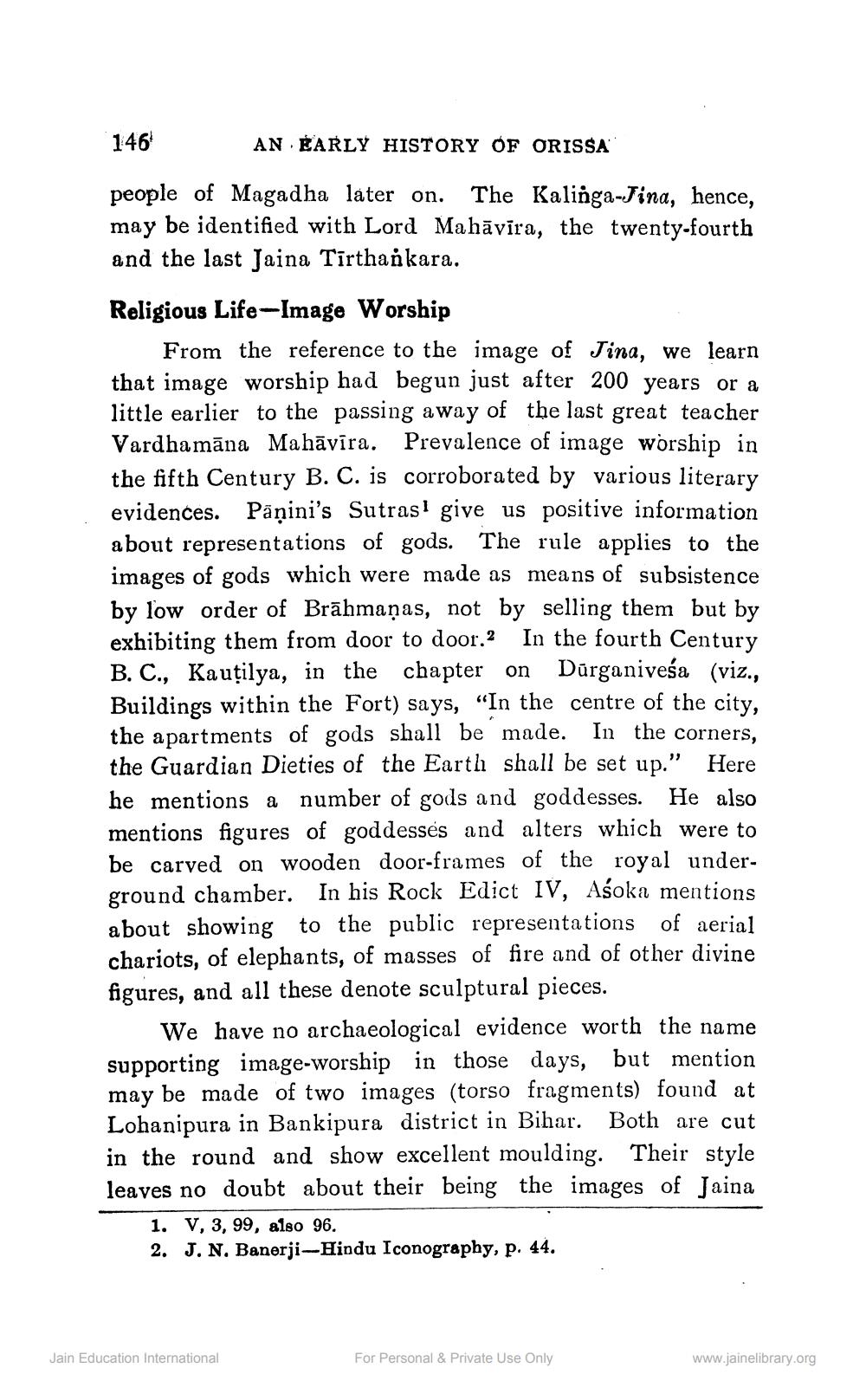________________
146
AN EARLY HISTORY OF ORISSA
people of Magadha later on. The Kalinga-Jina, hence, may be identified with Lord Mahāvīra, the twenty-fourth and the last Jaina Tīrthankara. Religious Life-Image Worship
From the reference to the image of Jina, we learn that image worship had begun just after 200 years or a little earlier to the passing away of the last great teacher Vardhamāna Mahāvīra. Prevalence of image worship in the fifth Century B. C. is corroborated by various literary evidences. Pāṇini's Sutras' give us positive information about representations of gods. The rule applies to the images of gods which were made as means of subsistence by low order of Brāhmaṇas, not by selling them but by exhibiting them from door to door. In the fourth Century B. C., Kautilya, in the chapter on Dürganiveśa (viz., Buildings within the Fort) says, “In the centre of the city, the apartments of gods shall be made. In the corners, the Guardian Dieties of the Earth shall be set up.” Here he mentions a number of gods and goddesses. He also mentions figures of goddesses and alters which were to be carved on wooden door-frames of the royal underground chamber. In his Rock Edict IV, Aśoka mentions about showing to the public representations of aerial chariots, of elephants, of masses of fire and of other divine figures, and all these denote sculptural pieces.
We have no archaeological evidence worth the name supporting image-worship in those days, but mention may be made of two images (torso fragments) found at Lohanipura in Bankipura district in Bihar. Both are cut in the round and show excellent moulding. Their style leaves no doubt about their being the images of Jaina
1. V, 3, 99, also 96. 2. J. N. Banerji-Hindu Iconography, p. 44.
Jain Education International
For Personal & Private Use Only
www.jainelibrary.org




